1. Premium Rum is projected to grow ahead of Standard Rum by 2026
2. Flavoured vodka value sales have hit £343m
3. Gin has a 17% share of total spirits, but sales have taken a hit
4. RTDs are a roaring success, with further growth predicted
5. Hard seltzers have failed to make a splash so far
6. Brands are launching alcoholic waters, but shunning the term ‘hard seltzer’
7. Nearly half of Brits are curious about cocktails with non-alcoholic spirits*, but c-stores need convincing
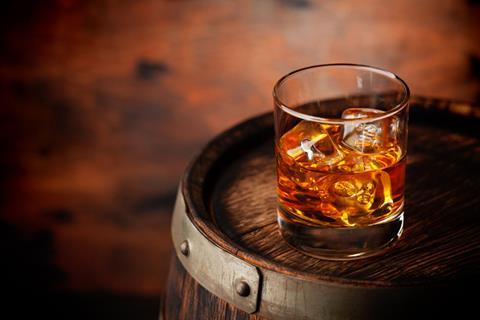
1. Premium Rum is projected to grow ahead of standard rum by 2026
IWSR
It’s getting pretty spicy in premium rum as top brands battle to evolve with the latest trends.
Rum is one of the leading categories growing share in spirits, and Spiced variants are the biggest contributor (ibid), according to Diageo, which states that Premium Rum is projected to grow +3.54% ahead of Standard Rum by 2026 (ibid).
Never one to miss out on a major trend, Diageo is introducing Captain Morgan Black Spiced which will join the brand’s Sliced Apple and Tiki variants.
Eleanor Morgan, Captain Morgan marketing manager at Diageo GB, says: “We know that rum presents a huge opportunity for retailers and operators, and this latest innovation is set to help tap into new occasions when it launches to the trade from September 2023.”
Bacardi has also taken a leap into luxury with the brand’s first premium aged rum that blends spices with coconut, pineapple and coconut blossom.
Global brand ambassador Dickie Cullimore says: “Category research showed us that flavoured and spiced are the fastest growing segments in rum and specifically premium rum, and the Piña Colada has risen through the ranks as a top five cocktail. Even more exciting was our discovery that people were looking specifically for unique flavours and aged rums.”
Meanwhile, the Isle of Wight Distillery recently launched Mermaid Spiced Rum, KBE Drinks has just introduced Makai spiced rum, and Pernod Ricard has begun distributing Sovereign Brands’ super premium portfolio, including Bumbu spiced rum.
London-based Best-One retailer Kay Patel says that the trend has been on the cards for a while. “They’ve premiumised gin, they’ve premiumised vodka, the next progression is rum,” he states. “You’ve got all manner of different flavours - the sweeter the better. Customers have a big sweet tooth.”
Aman Uppal, owner of One Stop Mount Nod in Coventry, adds: “Spiced rum has always been big, but we’re seeing an emergence of white rum.”
Rum’s growing popularity is also powering NPD in RTDs, according to Kingsland Drinks. “Rum-based cocktails in a can have started to gain in popularity and will likely continue as rum sees a resurgence,” says Jo Taylorson, head of marketing and product management at Kingsland Drinks. ”The growth of RTDs was predominantly driven by gin and vodka products but we are seeing growth in rum-based cocktails in a can as well as innovative flavours.”
This summer, the firm introduced Mix Up Coffee Rum & Cola and Apple Rum, Lime & Ginger Ale RTDs.
Diageo has also branched out with a Captain Morgan Strawberry Daiquiri pre-mix can.
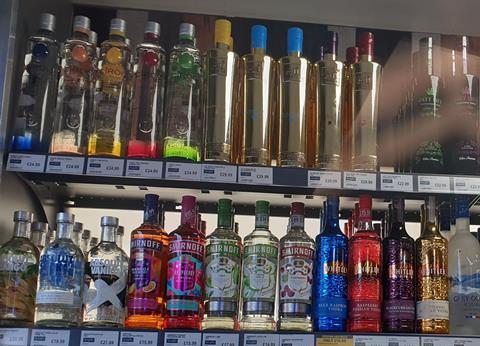
2. Flavoured vodka value sales have hit £343m
Nielsen & CGA
There’s still plenty of appetite for flavoured vodka, but the sub-category is keeping retailers on their toes as demand for particular flavours can be shortlived.
“Research has shown that flavoured vodka is performing incredibly well, and is worth £343m in value [Nielsen & CGA],” says Lauren Priestley, head of category development off trade at Diageo. “These lend themselves perfectly to the ongoing cocktails-at-home trend as they can form the base of easy to create serves, that do not require bartending expertise to enjoy a high-quality drink. Smirnoff has been leading the charge in flavoured vodka, achieving over 29% share of the Flavoured Vodka (CGA & Nielsen), having launched a raft of new innovations,” she says. The brand’s Smirnoff Cherry Drop hit shelves last February.
Meanwhile, Cîroc launched Cîroc Passion last September, which taps into the popularity of passionfruit martini cocktails, while Au Vodka has released a Pink Lemonade, which it suggests serving with Lemon Fanta or Pink Lemonade Lucozade.
Vodka is the best selling spirit for both Kay and Aman. Kay makes sure he stays on top of the numerous flavoured lines, but finds the process time consuming and not especially rewarding. “Every time a limited edition vodka comes out, we’ve got it,” he says. “They do well, but they all have a shelf life. Cîroc is always bringing out a new flavour and with every new flavour, you feel there’s a downward trend in the amount they sell, because they’ve got lots of competition because Au is always bringing out a new flavour.
“We have to constantly add and delist at the same time. It’s really hard when you’ve got limited space, and none of them can be considered a truly fast line. If it [a new flavour] doesn’t sound that great or there’s a duplication then I wouldn’t consider it.”

3. Gin has a 17% share of total spirits*, but sales have taken a hit
*Nielsen
The gin bubble has well and truly burst, according to Aman. “Two years ago, there was massive growth in gin, but now it’s declined,” he says, though he observes that it is the only spirit in his store where brands outsell own label lines.
His experience is echoed by the latest findings of our sister title, The Grocer’s Britain’s Biggest Alcohol Brands data, which shows that Gordon’s has dropped a bruising £72.8m in value sales in the past year [Nielsen], while Whitley Neill, Bombay and Tanqueray have all taken a severe hit, losing a total of £33.9m.
Nevertheless, Diageo remains optimistic, pointing out that Gordon’s SKU’s currently occupy eight of the top 10 spots in the impulse channel [Nielsen].
“Gin as a category delivers 17% share of total spirits, with the highest number of consumers and highest penetration in GB [Nielsen],” says Hazan Aydin, head of Gordon’s at Diageo GB.
Priestly adds: “Over 11 million consumers enjoy gin in the UK – and with 31% of UK alcohol drinkers choosing gin [Kantar], it is a leading spirit and is not a category to be overlooked.”
The spirit continues to be a staple within the RTD segment. Aydin says: “The RTD category is currently in growth, and with this expected to continue, Gordon’s remains well-placed in this environment, given the extensive range of premix drinks including its most recent successes with the launch of Gordon’s Premium Pink & Lemonade premix (RTD).”
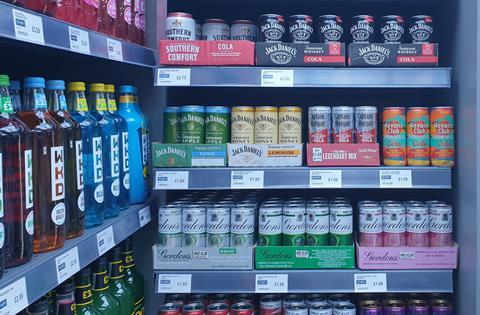
4. RTDs are a roaring success, with further growth predicted
Consumers can’t seem to get enough of pre-mixes right now and suppliers are falling over themselves as they fight for attention in a crowded, but vibrant marketplace.
Kay has been watching the category with interest. “RTDs in the last year have really expanded the flavours and they’ve gone into diet and I think that’s really created a boom,” he says. “We’ve allocated much more space in the chillers for that, and we’ve actually taken away a lot of the ciders because they’re very seasonal, but RTDs are growing all year round. Even though right now, we should be giving more space to cider, we’ve given it away to RTDs.”
The RTD category has experienced a year-on-year increase in sales, with a +3.9% growth in value between 2021 and 2022 [Nielsen], notes Budweiser Brewing Group (BBG). “Despite being a relatively new category, there is a significant opportunity for retailers to boost sales by offering customers something fresh,” says Sunny Mirpuri, director for wholesale & convenience, BBG.
“It has been a strong year for RTDs,” concurs Jo Taylorson, head of marketing and product management, Kingsland Drinks, claiming that they are particularly important within the convenience channel because they are often purchased for immediate or imminent consumption. “There’s real profit potential for convenience stores as RTDs are set to be a big growth area and the summer months will really see this category come into its own as brands compete for shelf space,” she says. ”The beauty of these products is that the single serve measures encourage trial and experimentation. It is an extremely cost-effective way for consumers to try new flavours, products and brands.” The firm is targetting Gen-Z drinkers with its Mix Up range.
Aman agrees that summer occasions lend themselves well to RTDs. “Generally the summer is when we see a rise in the sales of RTDs and we’ve got them on a permanent three for £5.50 deal,” says Aman. “They are things like your standard Diageo lines, your Gordons, Smirnoff, Captain Morgan, and then a few of the cocktail premix ones in a three for five and then Jack Daniel Coca-Cola are two for £4. Especially with all the bank holidays we’ve had recently over the past few months, people are buying RTDs when they’re going out having a picnic or just having them for pre drinking before they’re going somewhere else, so that’s positive.”
The Coventry retailer is busy making plans for the new Coca-Cola & Jack Daniels RTD. He is currently in talks with Coca-Cola Europacific Partners to talk about an in-store activation. “I’m part of a new retailer panel that Coca Cola set up last month,” he says. “All the people on that panel have the opportunity to get one of the new RTD chillers branded with Coca Cola and Jack Daniels.”
CCEP described the product’s launch as “a huge moment”. Elaine Maher, associate director at CCEP and distributor of Jack Daniel’s & Coca-Cola RTD in GB, says: “The UK is the biggest alcoholic ready-to-drink market in Europe and expected to grow significantly by 2030, driven largely by pre-mixed cocktails.”

5. Hard seltzers have failed to make a splash so far
While RTDs have been causing a stir, hard seltzers are proving something of an exception to the rule. As the go-to lower calorie alcoholic beverage in the US, many predicted that they would be equally well received in the UK, especially when big brands like Kopparberg, Bud Light and Smirnoff got involved in 2020. But three years on, the market has yet to live up to expectation.
Hard seltzers have “fallen flat” in the UK, according to Global Brands. “Global sales of hard seltzer reached $16.36bn in 2022 (Statista), but UK sales lag behind at only £16.9m [Nielsen],” says the firm, claiming that the products weren’t flavoursome enough.
The sub-category may not be thriving as a whole, but market leader White Claw, which has a 62% Hard Seltzer value market share, has seen +17% volume growth YOY (Circana) and has been the UK’s number one hard seltzer in value and volume since it launched in June 2020 (Circana).
White Claw off premises sales director Matt Rounding says: “The brands that have invested into the category have seen great success in hard seltzers – unlike the brewers jumping on the band wagon without the right offering and expecting big rewards without the hard work.
“Hard Seltzer isn’t a tag on for us, it’s our bread and butter - we are synonymous with the category. The numbers speak for themselves. White Claw is not only the dominant player in the Hard Seltzer category, but after just two years on the market, the brand is also ranked 13th in the RTD category by volume, delivering £7.7m and 1.3mL [Circana].”
He believes many manufacturers have been too quick to dismiss hard seltzers. “When they first arrived, hard seltzers ballooned in the UK off the back of the category’s huge success in the US, and major brewers jumped on the bandwagon during this gold rush, as well as independent brands, inflating the category in a short space of time,” he claims. “When those brewers saw their share of the market dip with every new player that entered the space, they considered it a failure, with many pulling their products and simultaneously slamming the category as they slammed the door on the way out.”
Kay is inclined to agree that brands need to put more support behind hard seltzers. “Nobody’s really succeeded with hard seltzers in this country,” he says. “It’s a bit hit and miss - they come in and they go out. Coca-Cola brought out Topo Chico and it’s not really available in many places now. Bud Light Seltzer [launched in April 2021] worked phenomenally for me. We went through loads of them, but then it just disappeared from the market. The big companies are giving up their products too early.”
He claims that White Claw is also tricky to source. “I see it in Costco now and again, but I can’t have it now and again - it’s got to be something that I can constantly get. I like to have at least two types of hard seltzer on shelf, but it’s always changing because it’s whatever I can get hold of.”
In response to Kay, Rounding says: “Wholesale was initially flooded with the big brewers’ hard seltzers, as they already had the distribution and wanted a piece of the pie. There’s still a lot to do to get our availability across the UK right, but it’s a great and positive challenge to have. As brand awareness rises, we need to reflect that in our distribution networks, which is why we’re proud to say that we’re now listed in Booker Wholesale since April this year.”
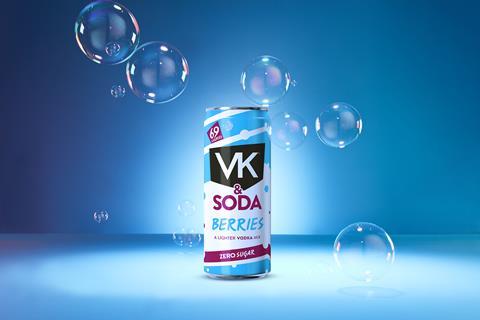
6. Brands are launching alcoholic waters, but shunning the term ‘hard seltzer’
Despite not being able to match the success of hard seltzers in the US, White Claw’s Rounding believes that there is undoubtedly demand in the UK for alcoholic water. “Younger drinkers are seeking a beverage that their parents didn’t drink, as well as making conscious lifestyle choices amid an increased focus on health and wellness compared to previous generations,” he says.
Global Brands has also recognised “clear demand for zero sugar, lower calorie options from UK consumers”.
Kay thinks that seltzers could help to fill the gap in demand for healthier alcoholic drinks. “People go through this thing of thinking ‘I’ve had too much sugar’ or ‘I need to reduce my weight for the summer’ and if the option is there they may try it,” he says. He feels that availability issues are stunting seltzers before they’ve had a chance to take off. “If you don’t have it constantly in their face, they give up on it.”
As far as Aman is concerned, one of the main sticking points for seltzers is that Brits don’t understand the term. “We’ve tried so many different brands,” he says. “I think there’s still an opportunity for them but there’s a long way to go. I don’t think customers understand what seltzers are. You hear seltzer, you think of [pain relief tablets] Alka-Seltzer!”
In fact, research conducted last year by alcohol regulator The Portman Group showed that understanding of the term ‘hard seltzer’ was low with 65% of consumers failing to recognise what it means when the word ‘had’ is linked to ‘seltzer’.
Perhaps this is why Budweiser Brewing Group avoided the term ‘seltzer’ when launching its Corona-branded vodka & sparkling water mixes last year. “Corona Tropical presents a huge sales opportunity for independents looking to diversify their alcohol range in-store,” says BBG’s Mirpuri.
Global Brands hasn’t written seltzers off just yet either, but has notably shied away from using the term on pack. The firm launched 69 calorie sugar free VK & Soda into the off-trade earlier this month, following a successful introduction into the on-trade. “We’re absolutely thrilled to release this true innovation for the category – a product enticing the rapidly growing segment of health-conscious consumers, with the full flavour and taste that VK delivers,” says head of brand Charlie Leaver.

7. Nearly half of Brits are curious about cocktails with non-alcoholic spirits*, but c-stores need convincing
*Martini
Suppliers are adamant that there is an appetite for alcohol-free spirits, but many convenience stores have yet to see this translate into sales.
”We are seeing more consumers looking for alcohol-free alternatives,” says Christine Kariuki, senior brand manager, Tanqueray at Diageo GB. The firm’s Tanqueray London Dry 0.0 has seen growth of +16.4% in the off trade.
Gordon’s has also built up a presence in no and low, following up its original 0.0% Alcohol Free Spirit with Premium Pink 0.0% last year. “The Gordon’s 0.0 SKUs continue to deliver for the brand, with Gordon’s proudly holding majority of share within the alcohol-free spirits segment[12],” says Aydin.
Spiced rum brand, Dead Man’s Fingers, has also ventured into the low and no category with its Spiced 0.0 liquid.
Research from Italian vermouth brand Martini has revealed that over half of Brits (53%) are looking to reduce their alcohol intake. Rather than quitting alcohol altogether, Martini found more young adults than ever are switching, not ditching - choosing No & Low alcohol drinks more frequently.
Both Gen Z and Millennials in the UK are also more likely to be “blenders”, switching between No & Low and full strength on the same occasion, while 49% of people surveyed were curious about cocktails with non-alcoholic spirits.
But despite this, One Stop Mount Nod has seen zero interest in no and low spirits from customers. “In terms of zero spirits, there’s dust on those bottles,” he says. “I can’t remember the last time we sold one.”
He feels that price is a major barrier. “For somebody to actually purchase Gordon’s zero it’s going to cost £14-15, which is very close to the price of the [alcoholic] original. It’s a lot to spend on something you may only be having a couple of drinks out of.”
Kay echoes the same concerns. “There’s not much difference in price between Gordon’s and Gordon’s zero. You can’t expect someone to pay £13 for something that doesn’t have any alcohol in it. Only if they [the suppliers] actually say, ‘Okay, it only cost us £2 a bottle and we’ll sell it at £5.99’ do I think you’ll see some change.”




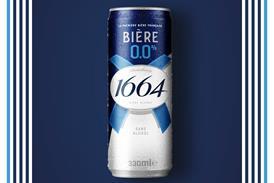
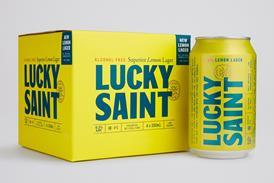
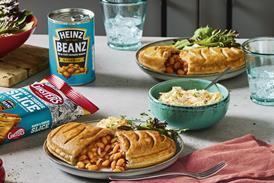
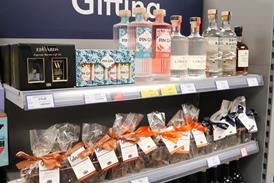
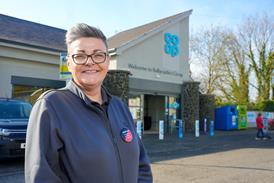
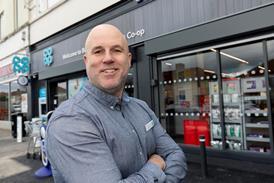
![WG-4003[58]](https://d2dyh47stel7w4.cloudfront.net/Pictures/274x183/4/5/1/353451_wg400358_6083.jpg)

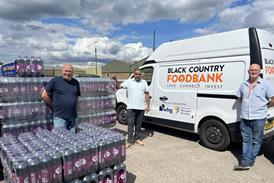



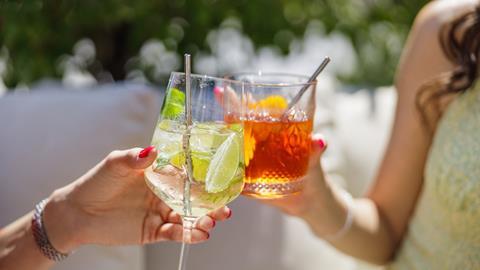
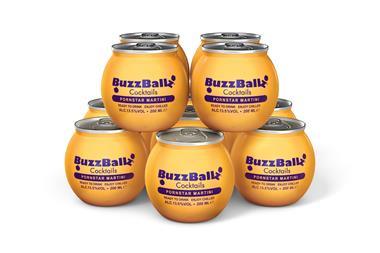
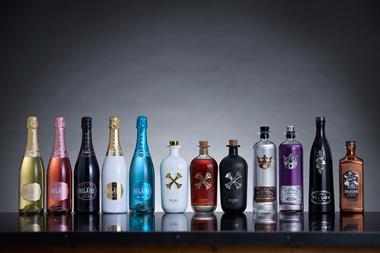
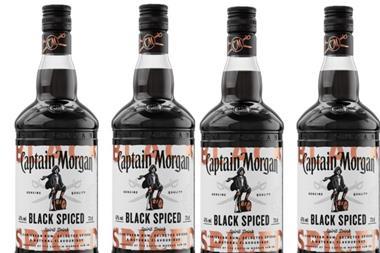
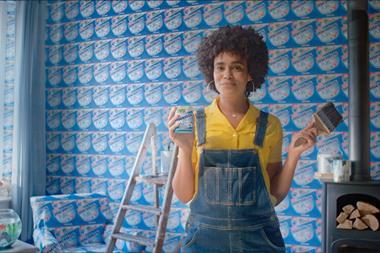
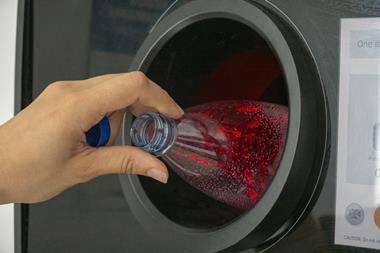
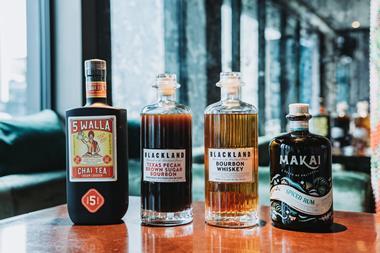
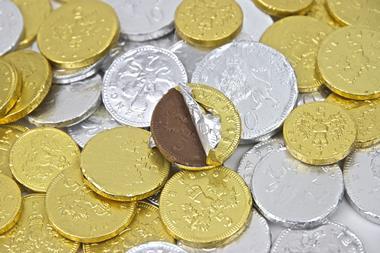
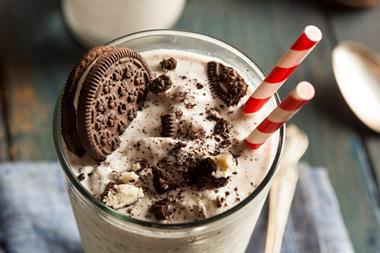

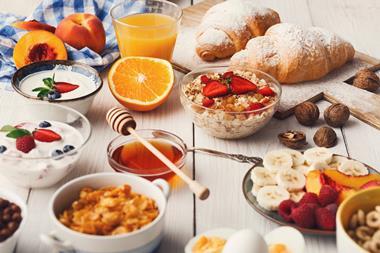
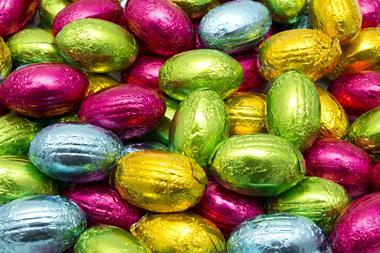
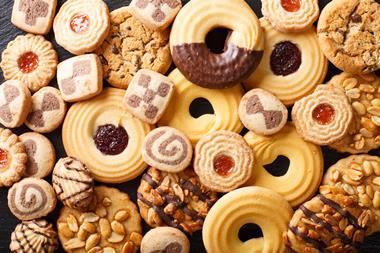
No comments yet